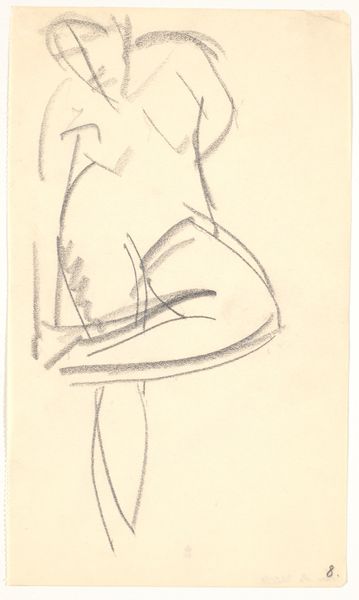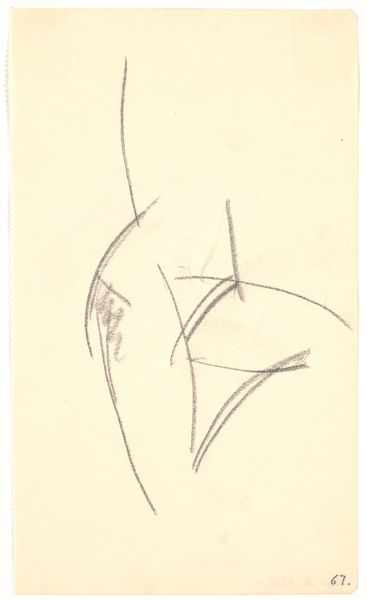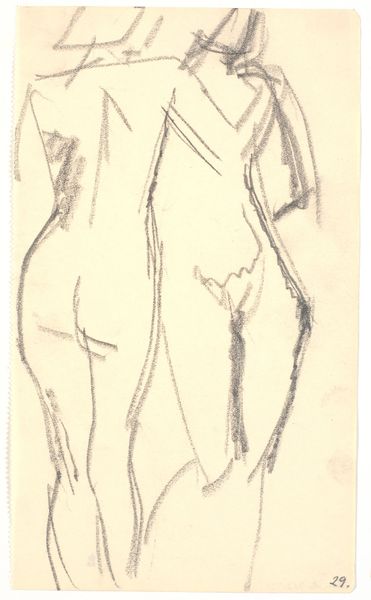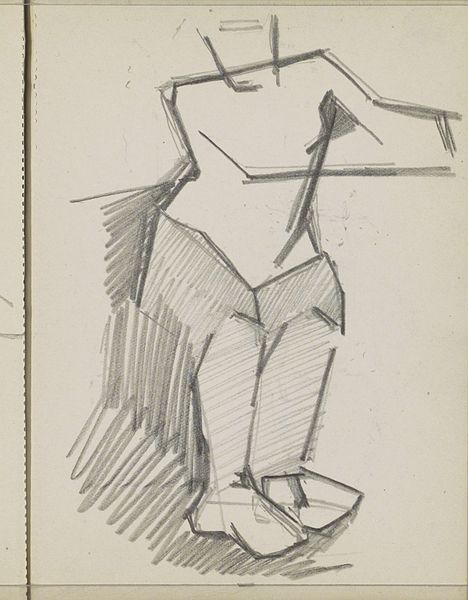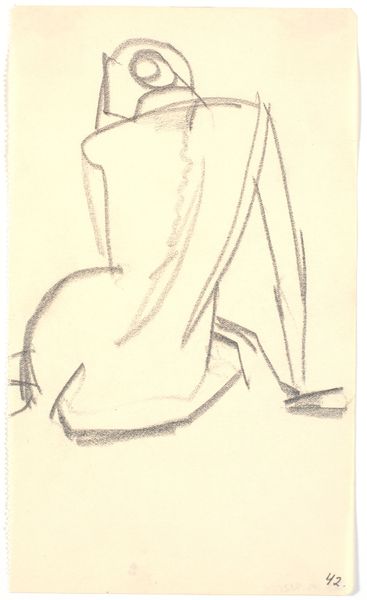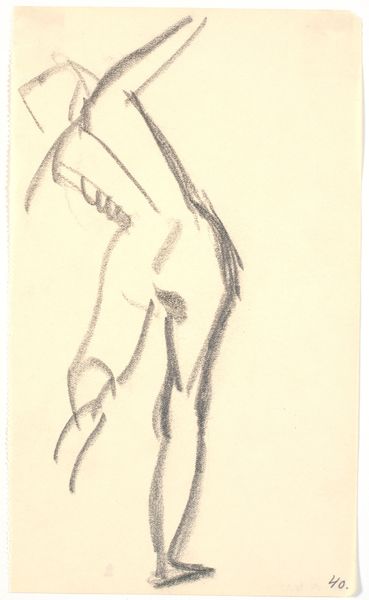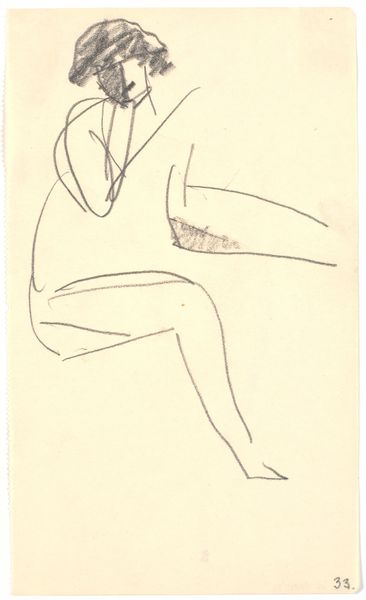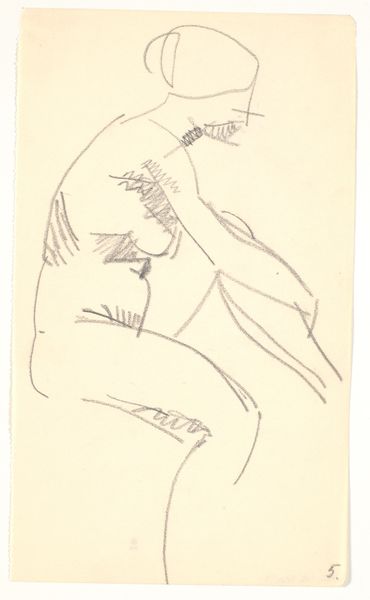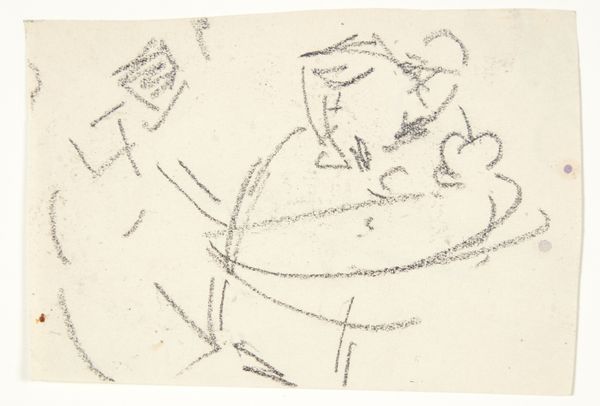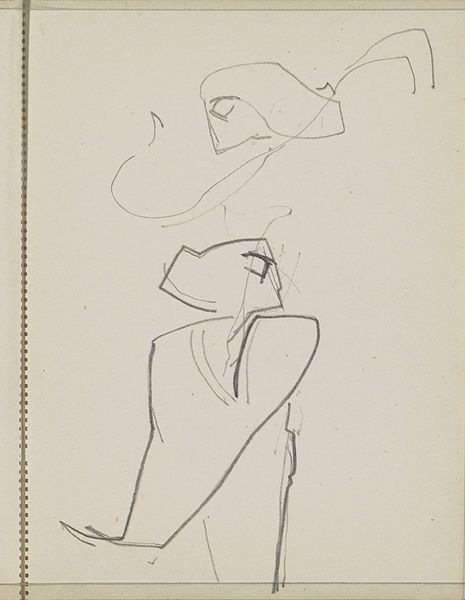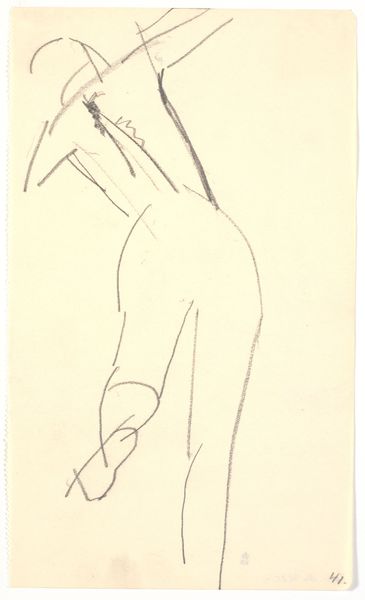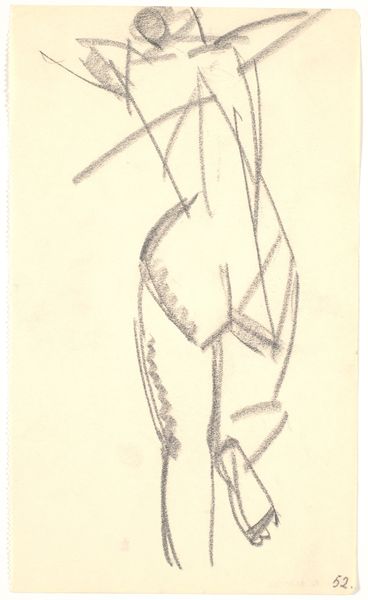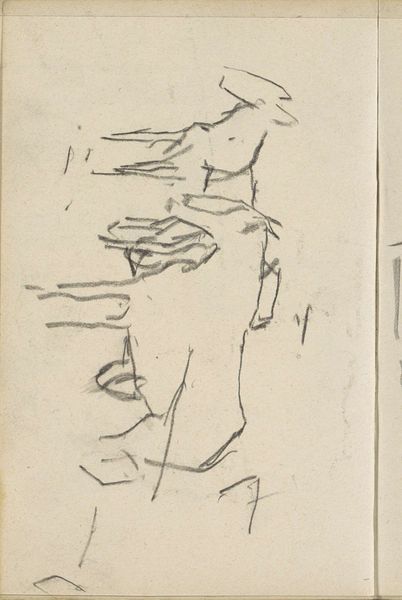
drawing
#
drawing
#
pen illustration
#
pen sketch
#
ink line art
#
personal sketchbook
#
linework heavy
#
ink drawing experimentation
#
pen-ink sketch
#
thin linework
#
sketchbook drawing
#
storyboard and sketchbook work
Dimensions: 209 mm (height) x 124 mm (width) (bladmaal)
Curator: This is Karl Isakson’s "Siddende model," created around 1914 to 1915. It’s a drawing held here at the SMK, Statens Museum for Kunst. Editor: It strikes me immediately as incredibly raw, almost vulnerable. The loose, sketchy lines—it's as if we’re seeing a private moment, a fleeting impression of the model. Curator: Precisely. Isakson, deeply affected by the artistic climate of his time, explores the boundary between finished artwork and preparatory sketch. We see a distillation of form; the bare essentials are captured. Editor: And even within this simplicity, I see echoes of classicism. The pose, while casual, has a deliberate quality. There's a visual conversation with past depictions of the female nude. The positioning of the arms above the head, for example, hints at gestures of bathing or unveiling, symbols linked to Aphrodite, maybe? Curator: An interesting observation! Indeed, although it departs stylistically, we cannot ignore the influence of tradition in the artwork. Consider, though, how the social perception of the nude figure had changed by the early 20th century, increasingly moving towards greater societal and artistic openness. Editor: That very social context probably allowed for an artistic interpretation that feels unidealized. Look at how Isakson treats the figure; the lines emphasize a certain realism, avoiding any hint of contrived perfection. Even the shadow emphasizes the raw features. Curator: The visible marks and the incomplete details further this aim. They reveal the artistic process and also encourage the viewer to participate, filling in the gaps. This method allows Isakson to question how the model is framed within contemporary exhibition practices. Editor: So, the rawness becomes intentional. The visible "imperfections" give it this fascinating modern feel. By drawing attention to its creation, it avoids the symbolic perfection one would see in classical idealism, almost resisting being an untouchable artistic commodity. Curator: A truly radical and engaging representation in the Danish museum’s collection. Editor: Yes, a study that speaks volumes, really prompting us to reconsider preconceived notions on symbolism in a historical context.
Comments
No comments
Be the first to comment and join the conversation on the ultimate creative platform.
